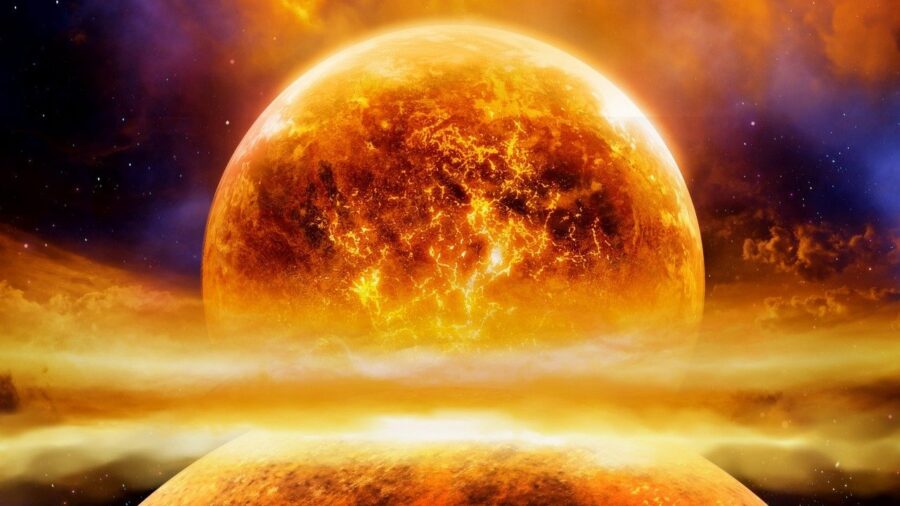Star Collision Is The End Of Earth As We Know It?

Science Alert has done it again, and has enlightened us about the horrifying prospect of a kilonova explosion, which is the scientific term for a neutron star collision. The research, which has been posted on preprint server arXiv, breaks down that kind of cosmic fallout we could expect from such a catastrophe, and a star collision of this magnitude can wipe out life on Earth as we know it. Fortunately for us, kilonova explosions are are extremely rare, and have to meet a number of conditions to pose an imminent threat.
One such condition for a neutron star collision to adversely affect our planet is its proximity. If we’re within 297 light-years of a kilonova explosion, the gamma rays produced have the potential to be very harmful to our way of life. But proximity is only one part of the equation, and experts have reason to believe that if we’re not in the explosion’s direct path, then it’s unlikely that we’ll be rummaging through the wasteland as our species struggles for survival.
If you’re a glass-half-full kind of person, then you’ll be glad to know that a neutron star collision should be the least of your worries because there are other natural phenomena right in our own cosmic backyard that are more likely to destroy our planet and end humankind as we know it.
But we need to consider the sliding scale of potential damage when talking about neutron a star collision’s radioactive aftermath. If we’re within 13 light-years of such an impact, we can still experience an intense influx of gamma radiation, which would strip Earth of its stratospheric ozone and take roughly four years to recover from.
If we’re within 16 light-years of a kilonova explosion, however, we are still susceptible to experiencing X-ray afterglow, which is far more lethal than gamma radiation, according to the study.
Star collisions shouldn’t be taken lightly, but in the grand scheme of things, it’s better that we focus on giant flares from our own sun, asteroid impacts, and supernovae.
Given the rarity and distance of these star collisions, it’s safe to say that we’re not directly in harm’s way, but an increased awareness of this type of star collision is significant to our understanding of the universe. And it’s not necessarily the star collision that could potentially cause the most damage, but rather the long-term bubble of cosmic rays.

If we’re within 35 light-years of a star collision, we run the risk of getting pelted with enough radiation to strip our ozone completely, leading to an extinction-level event, but only if Earth falls in the radiation’s path.
But still, the stars need to align in just the right way, at just the right proximity to pose any real threat to our planet. If you’re a glass-half-full kind of person, then you’ll be glad to know that a neutron star collision should be the least of your worries because there are other natural phenomena right in our own cosmic backyard that are more likely to destroy our planet and end humankind as we know it.
New research suggests a neutron star collision could be even worse for the people of Earth than we realized.
Star collisions shouldn’t be taken lightly, but in the grand scheme of things, it’s better that we focus on giant flares from our own sun, asteroid impacts, and supernovae. The simple fact of the matter is that kilonova explosions are very few and far between, and out of 100 billion known stars in the entire Milky Way galaxy, only 10 stars collisions of this magnitude are likely to collide and wreak havoc.
Given the information that we currently have, we’re more likely to experience a disruption in our technology rather than an extinction-level event, but with that we’ll experience one heck of a light show that will make us want to put down our smartphones and marvel at the cosmic event.












